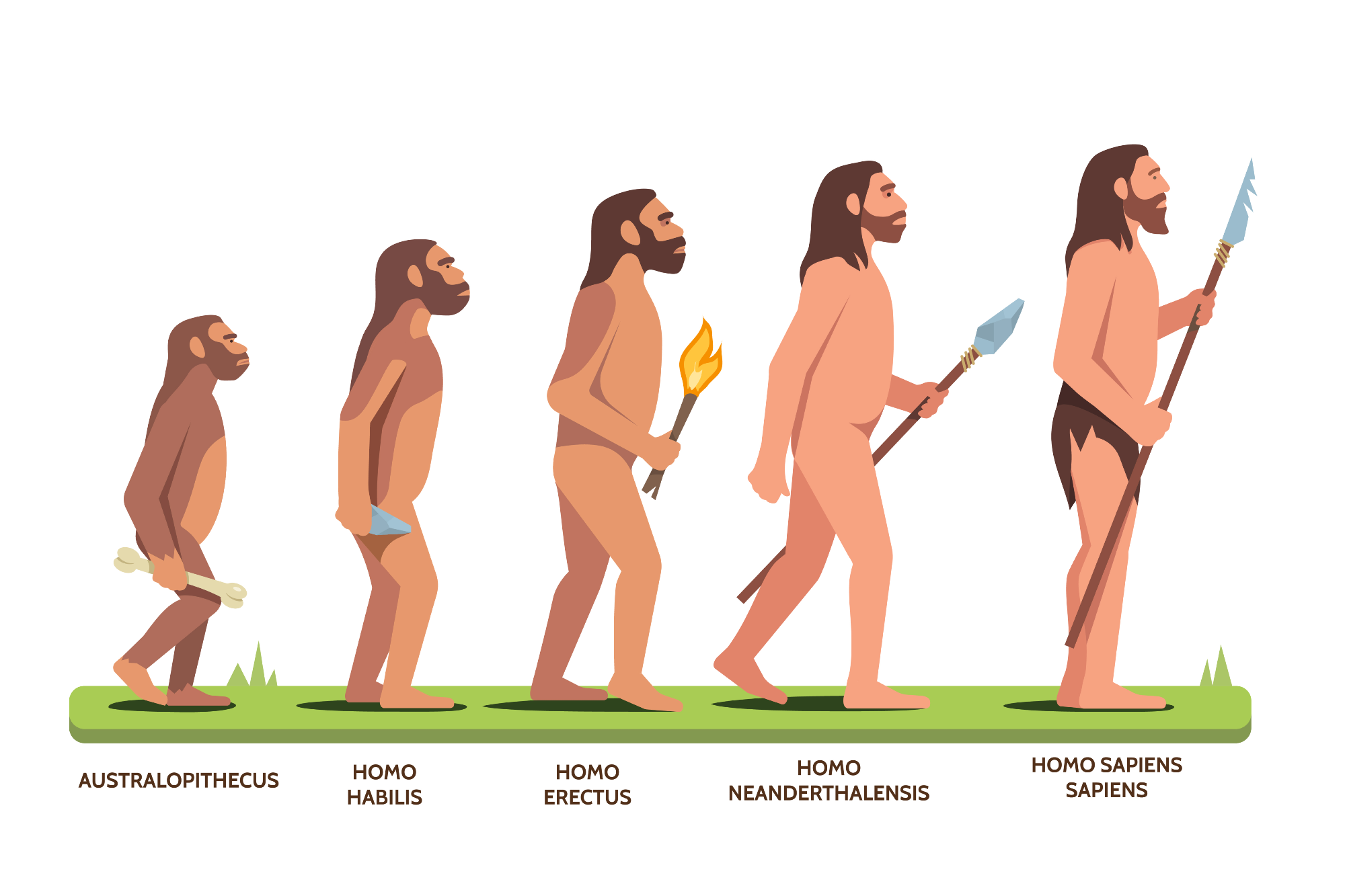Oct 16 2020
Among the early humans constituting six or more different species and belonging to the genus Homo, only Homo sapiens were able to survive.
Now, a new study, which integrates the fossil record and climate modeling looking for clues to find out the reason behind those past extinctions of the ancient ancestors, indicates that climate change—the inability to adjust to either cooling or warming temperatures—could have played a significant role in sealing their fate.

Image Credit: Iconic Bestiary/Shutterstock.com
The study was published in the One Earth journal on October 15th, 2020.
Our findings show that despite technological innovations including the use of fire and refined stone tools, the formation of complex social networks, and—in the case of Neanderthals—even the production of glued spear points, fitted clothes, and a good amount of cultural and genetic exchange with Homo sapiens, past Homo species could not survive intense climate change.
Pasquale Raia, Università di Napoli Federico II
Raia continued, “They tried hard; they made for the warmest places in reach as the climate got cold, but at the end of the day, that wasn’t enough.”
To gain a better understanding of the previous extinctions of Homo species, such as H. habilis, H. ergaster, H. erectus, H. heidelbergensis, H. neanderthalensis, and H. sapiens, the team depended on a high-resolution past climate emulator, which offers rainfall, temperature, and other data across the past five million years.
The researchers also studied a comprehensive fossil database covering over 2,750 archaeological records to model the evolution of the climatic niche of the Homo species over time. The aim was to gain insights into the climate preferences of those early humans and the way they responded to variations in climate.
The researchers’ studies provide strong evidence that three Homo species—that is, H. neanderthalensis, H. heidelbergensis, and H. erectus—lost a considerable part of their climatic niche just before they became extinct.
The team reported that this decrease has coincided with sharp, adverse variations in the global climate. As far as Neanderthals are concerned, things were probably made harder by competition with H. sapiens.
We were surprised by the regularity of the effect of climate change. It was crystal clear, for the extinct species and for them only, that climatic conditions were just too extreme just before extinction and only in that particular moment.
Pasquale Raia, Università di Napoli Federico II
Raia observed that there is a certain ambiguity in the identification of fossil remnants at the level of species, paleoclimatic reconstruction, and the aging of fossil sites. However, the major insights “hold true under all assumptions,” added Raia.
According to him, the results may act as a kind of warning to today’s humans as they experience unparalleled changes in the climate.
It is worrisome to discover that our ancestors, which were no less impressive in terms of mental power as compared to any other species on Earth, could not resist climate change. And we found that just when our own species is sawing the branch we’re sitting on by causing climate change. I personally take this as a thunderous warning message. Climate change made Homo vulnerable and hapless in the past, and this may just be happening again.
Pasquale Raia, Università di Napoli Federico II
The study was funded by MCTIC/CNPq/FAPEG.
Journal Reference:
Raia, P., et al. (2020) Past Extinctions of Homo Species Coincided with Increased Vulnerability to Climatic Change. One Earth. doi.org/10.1016/j.oneear.2020.09.007.